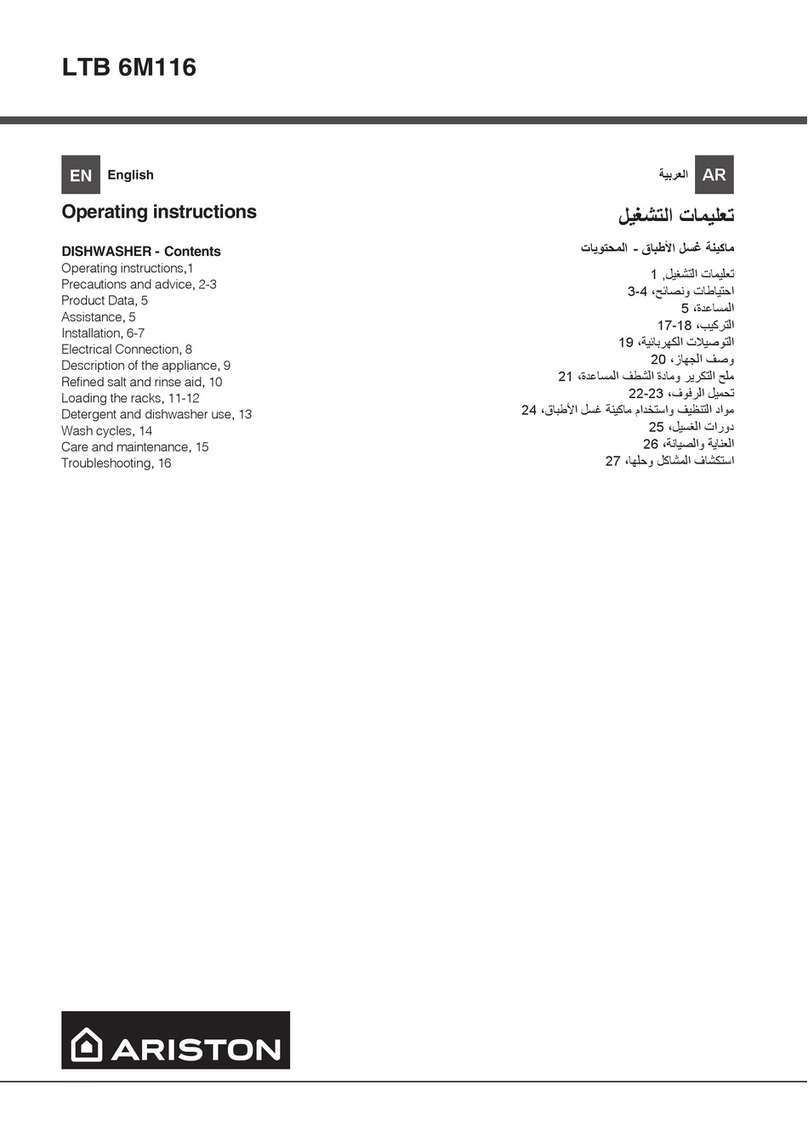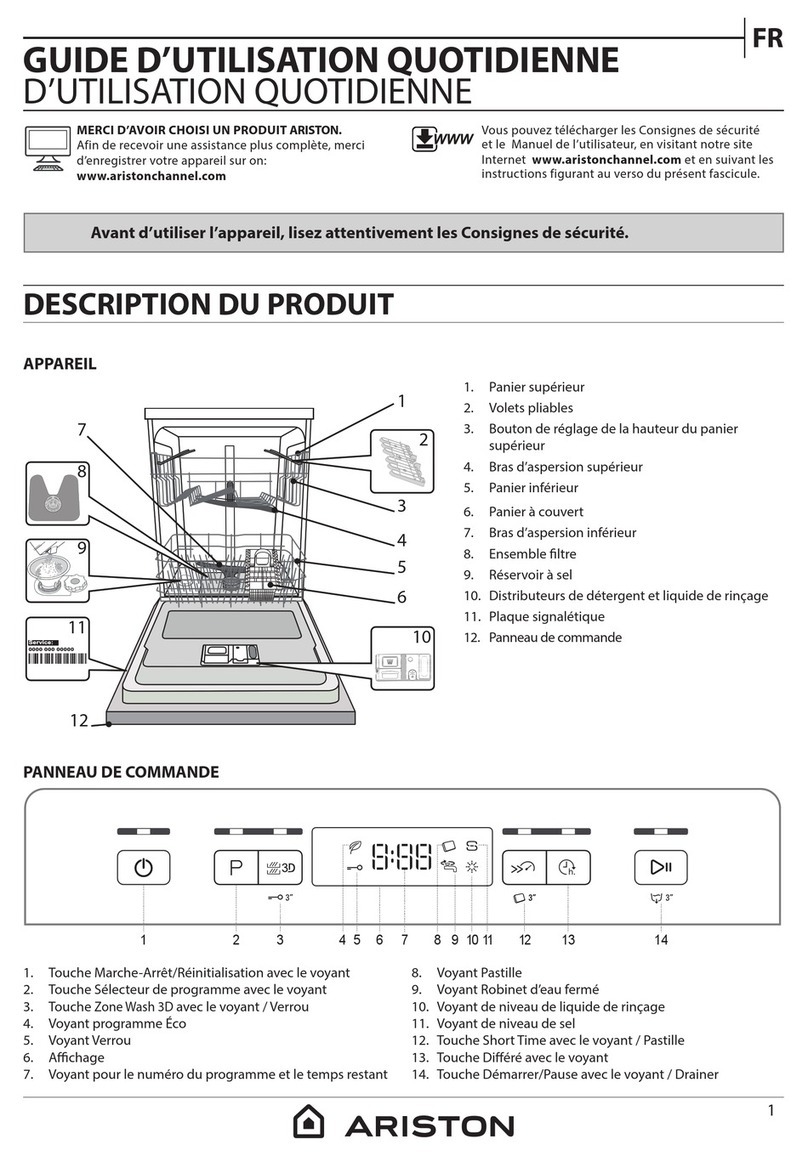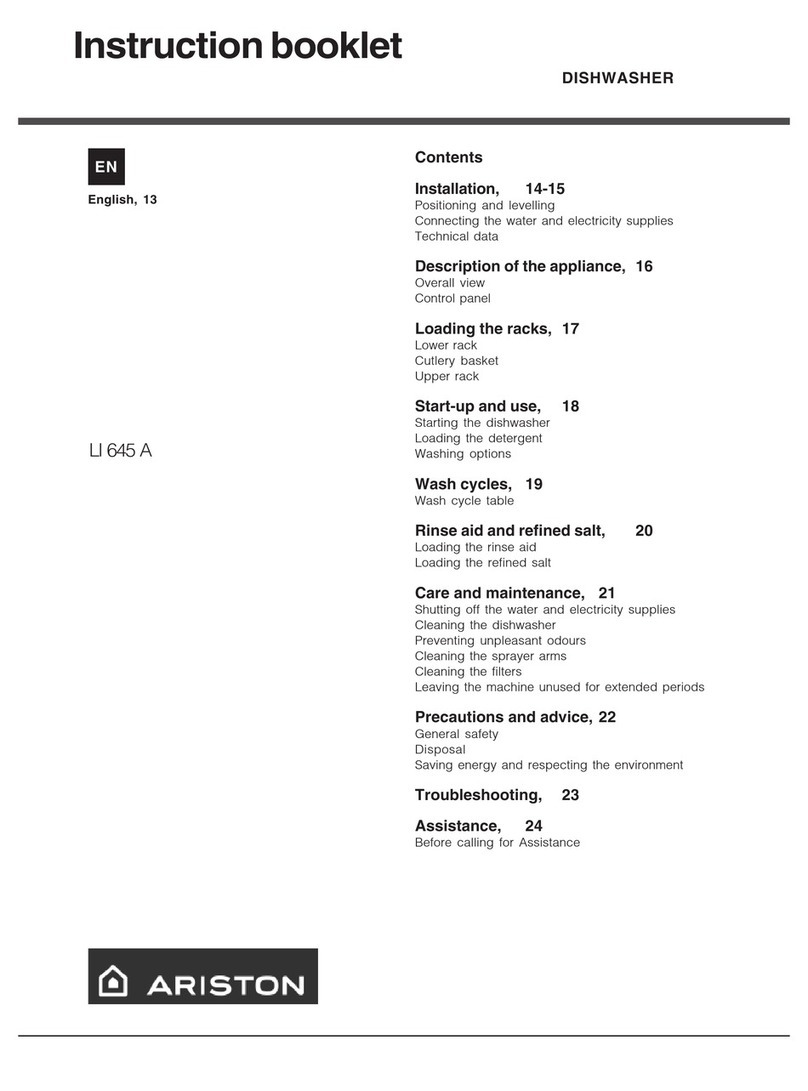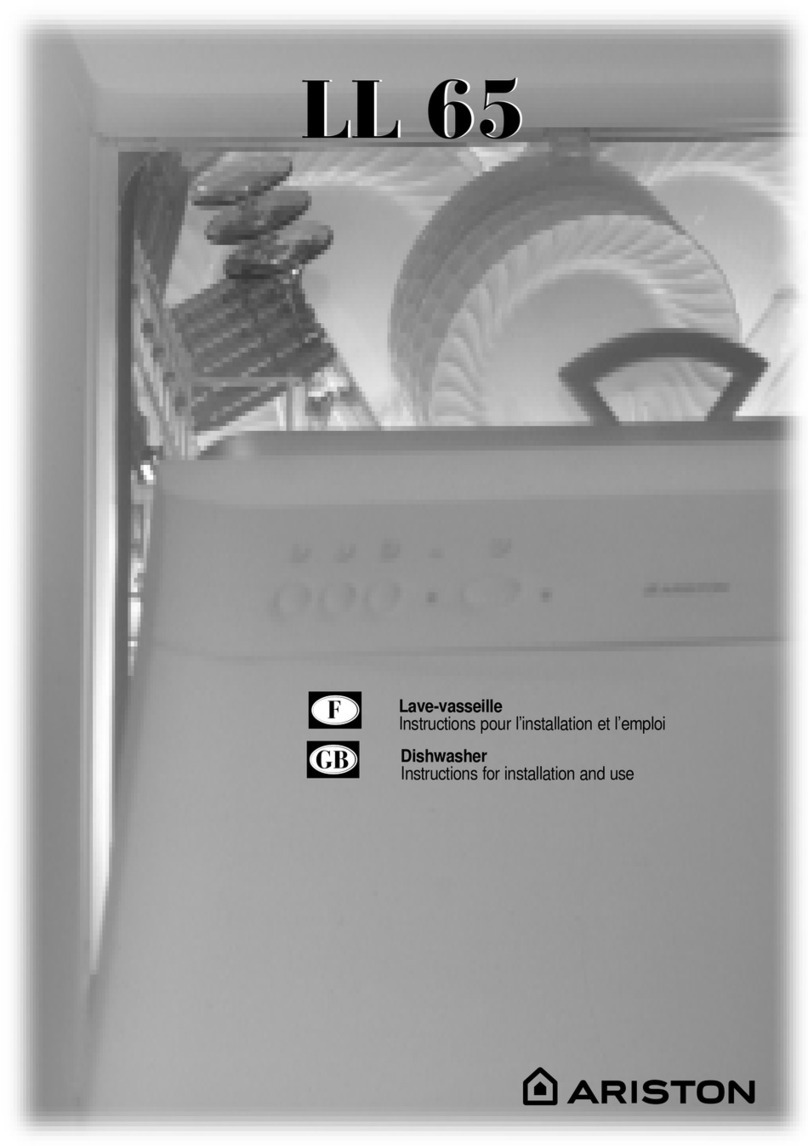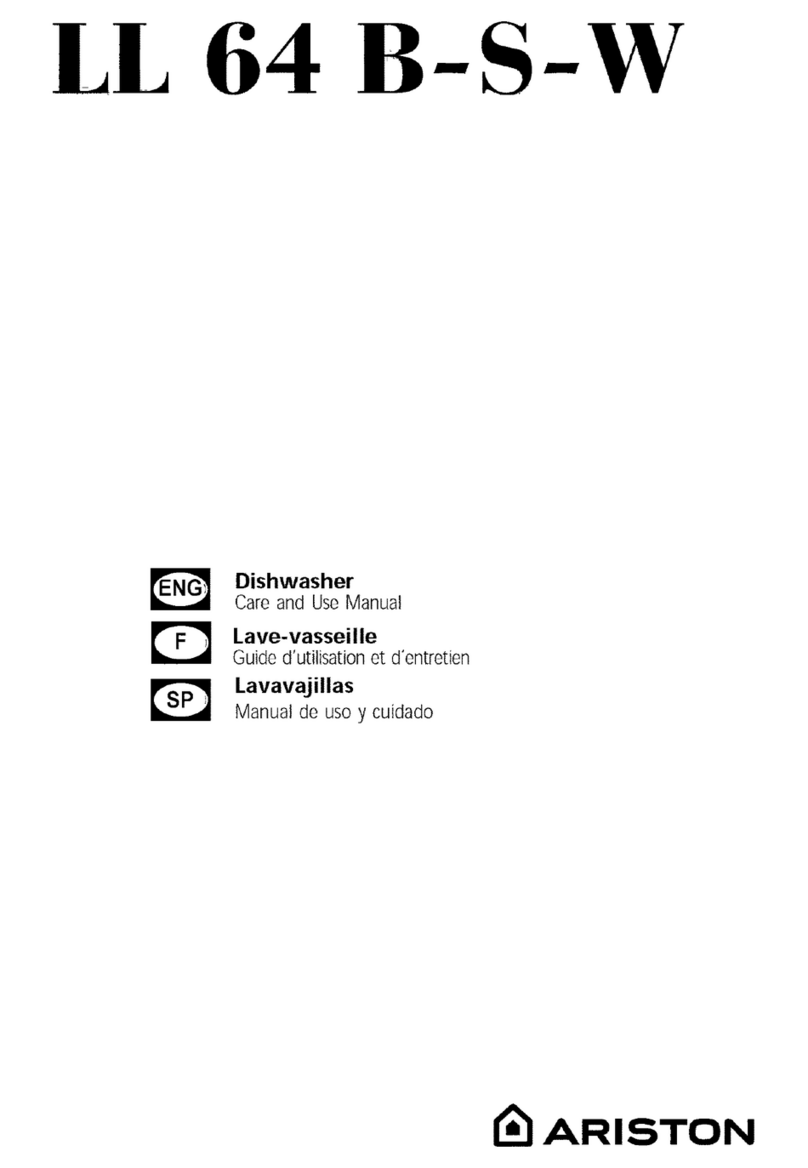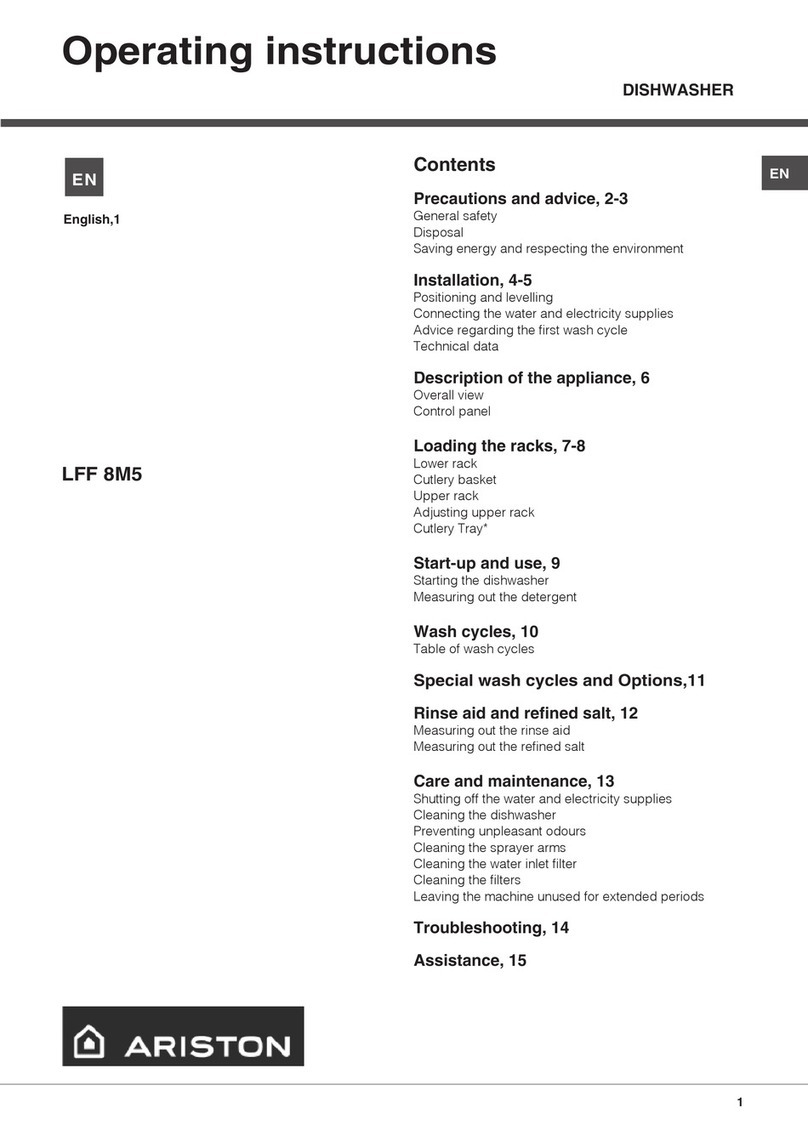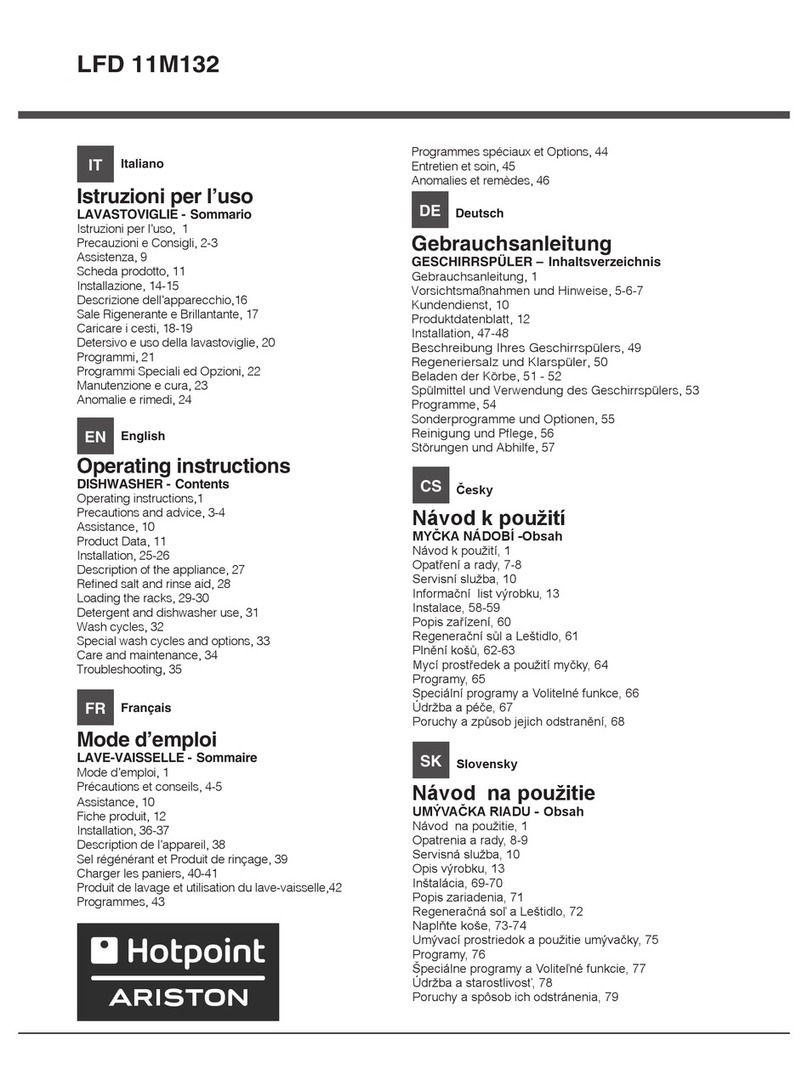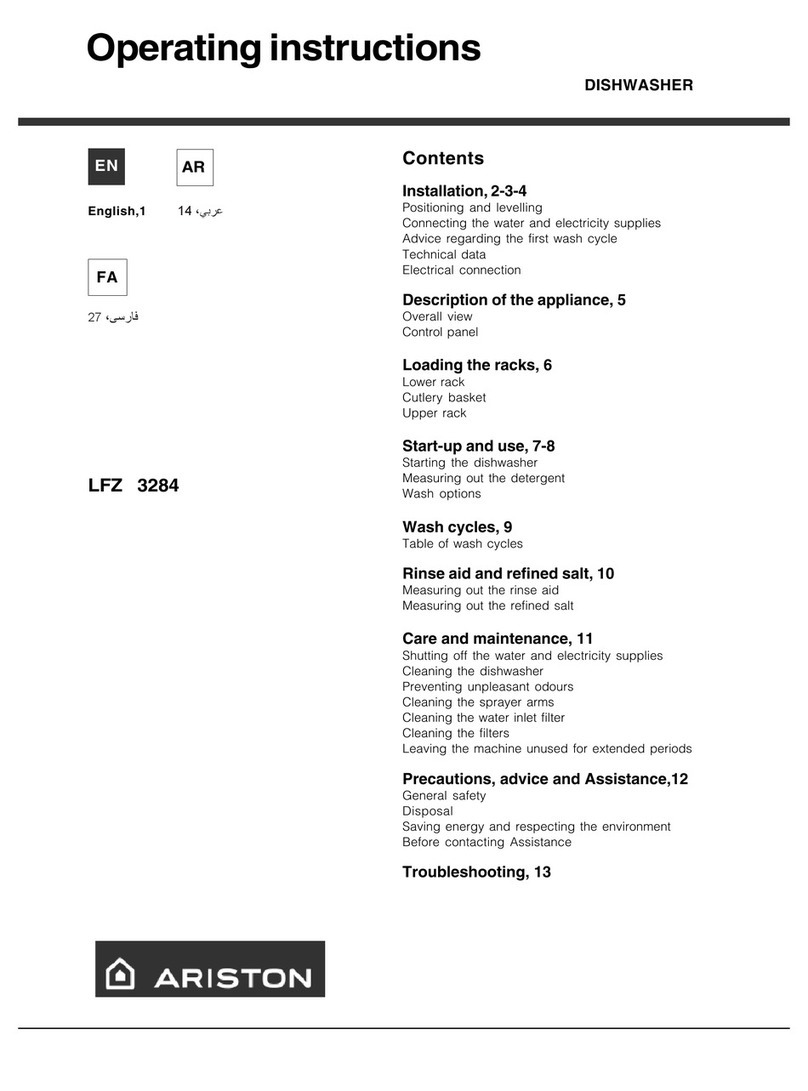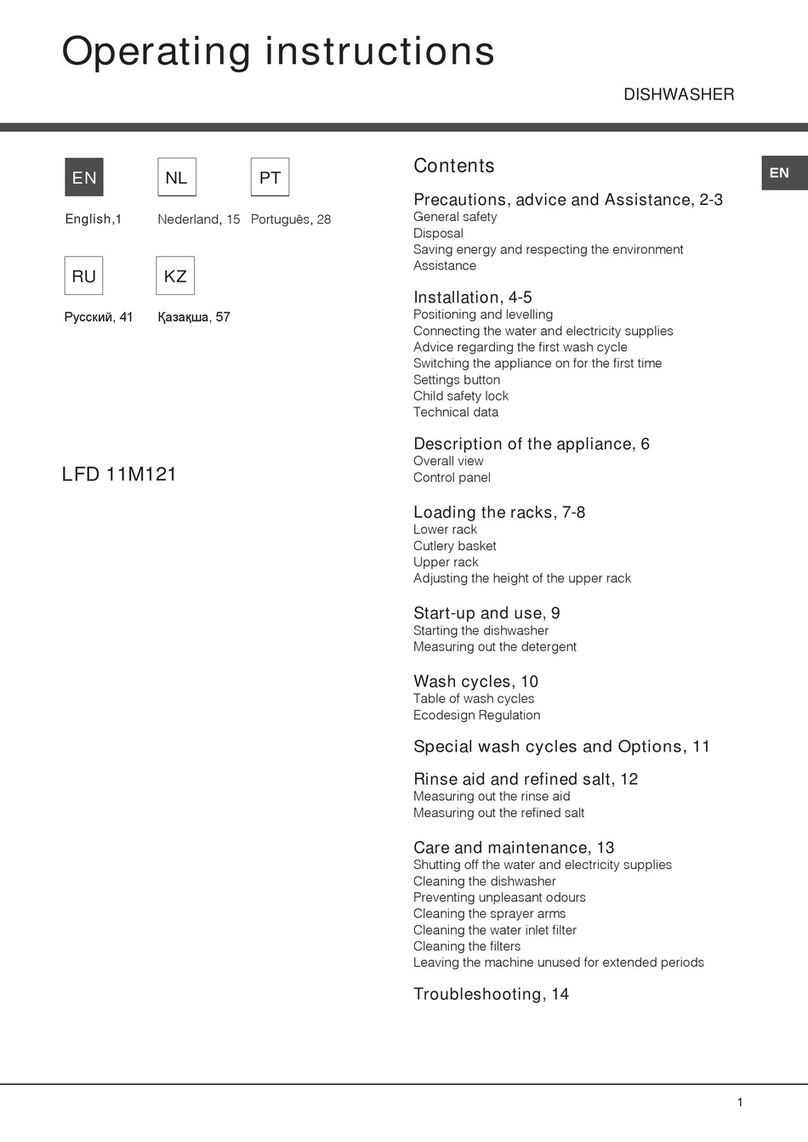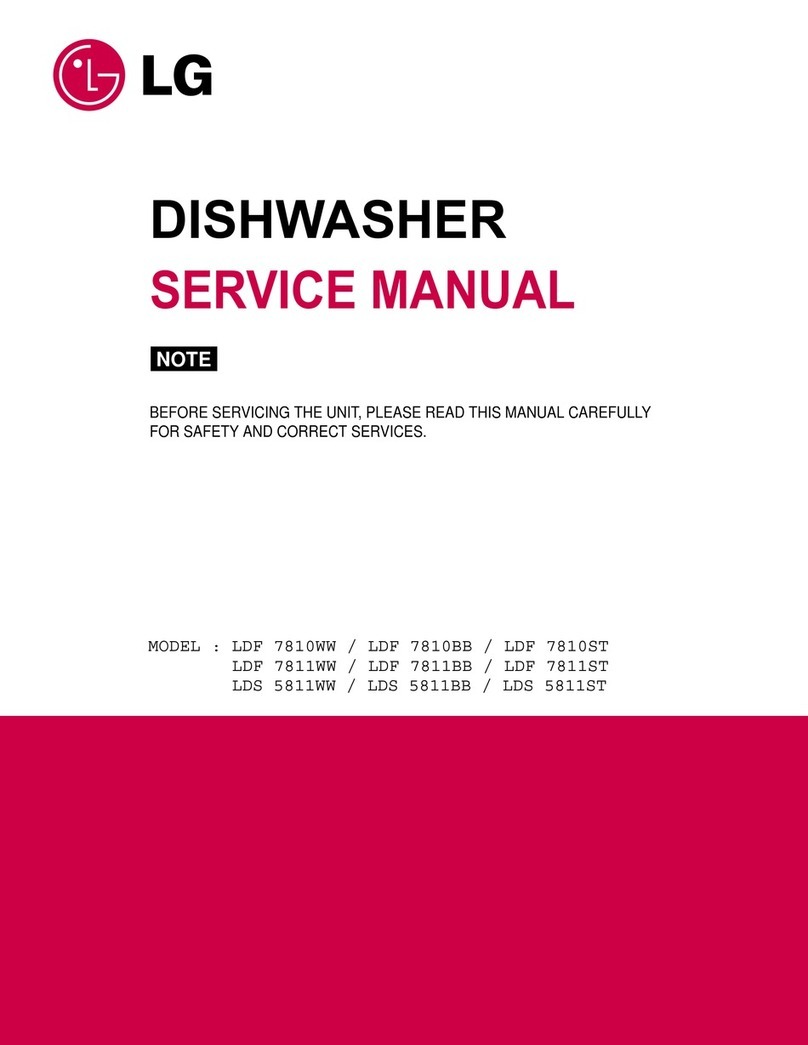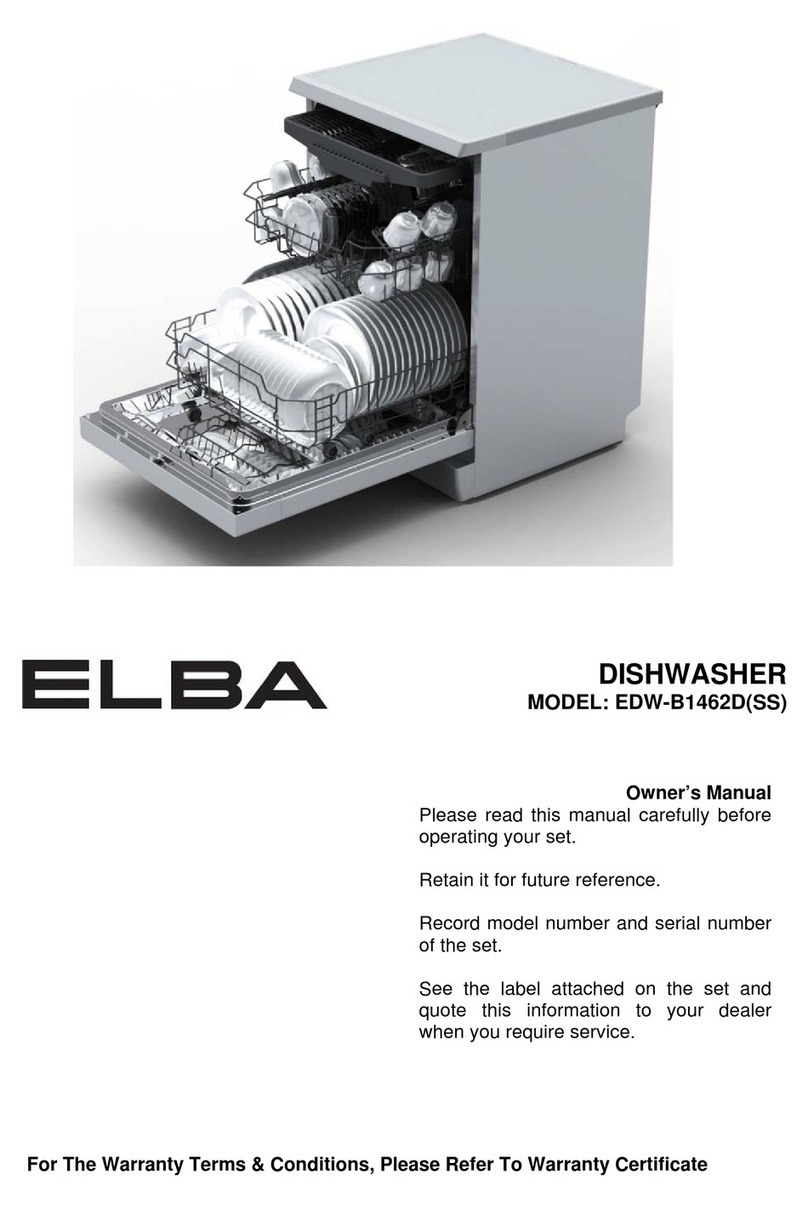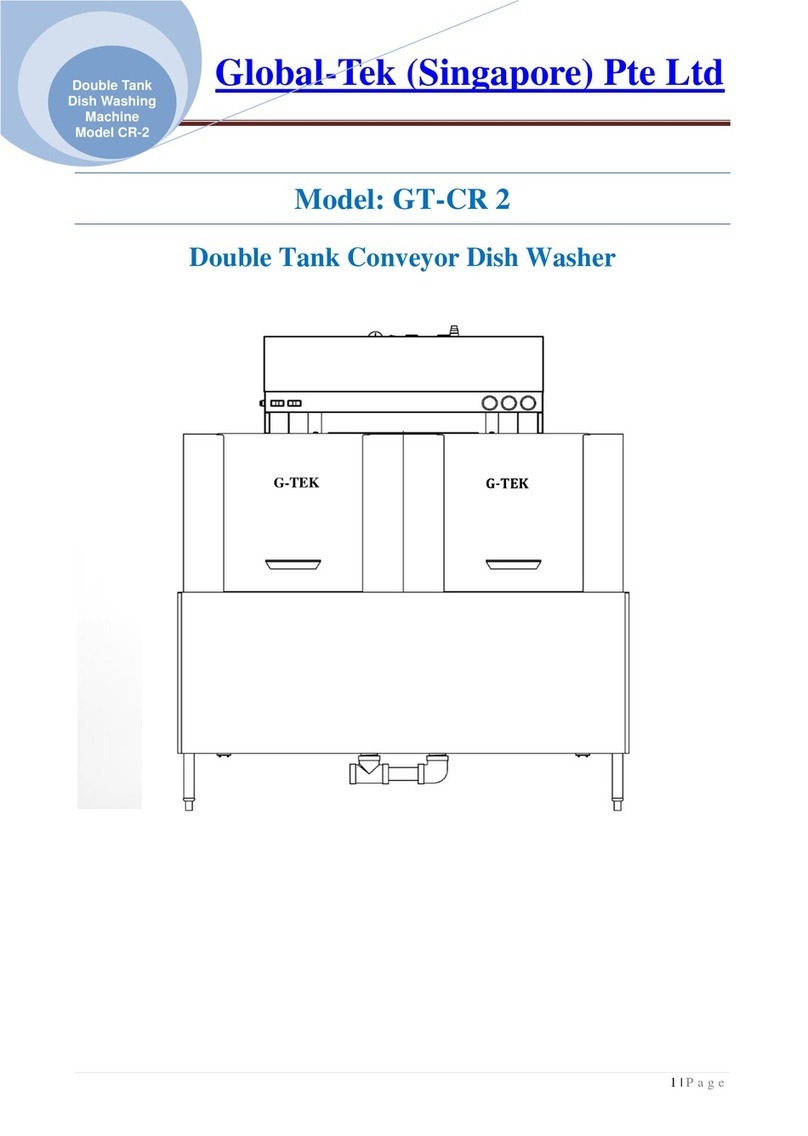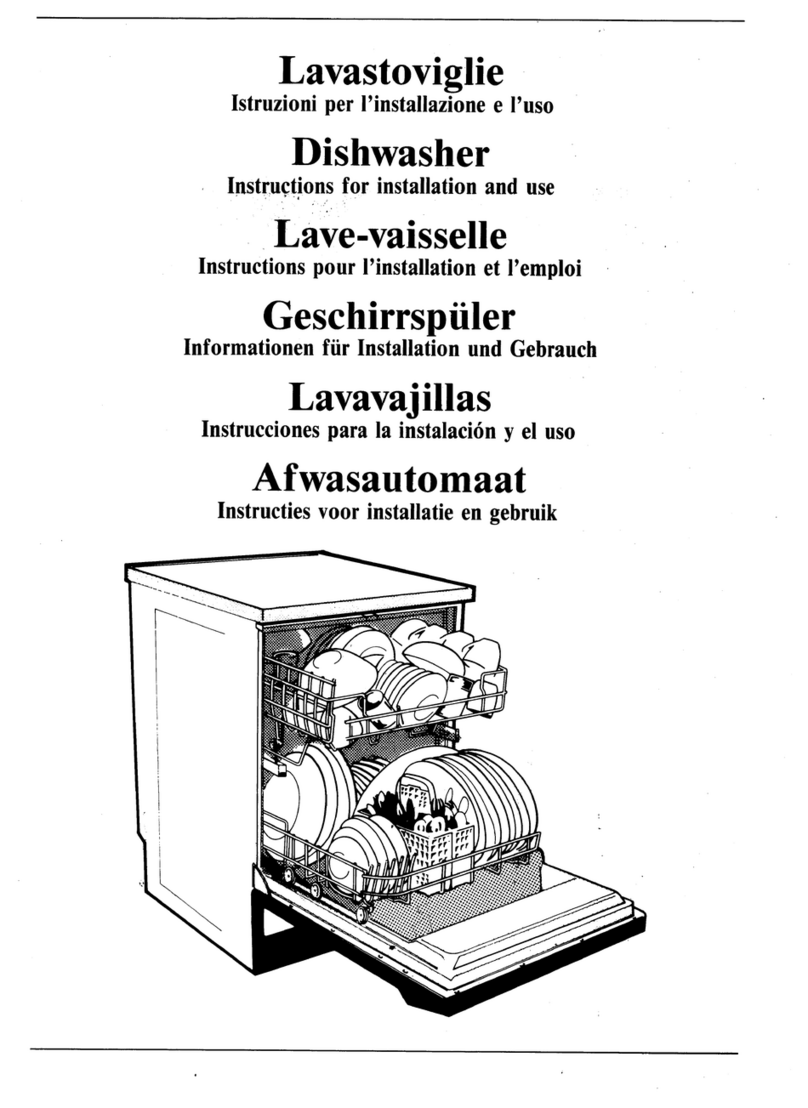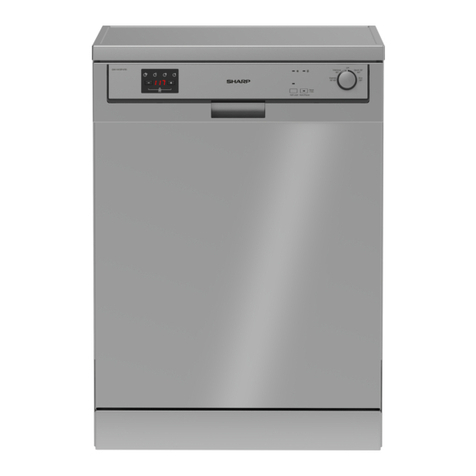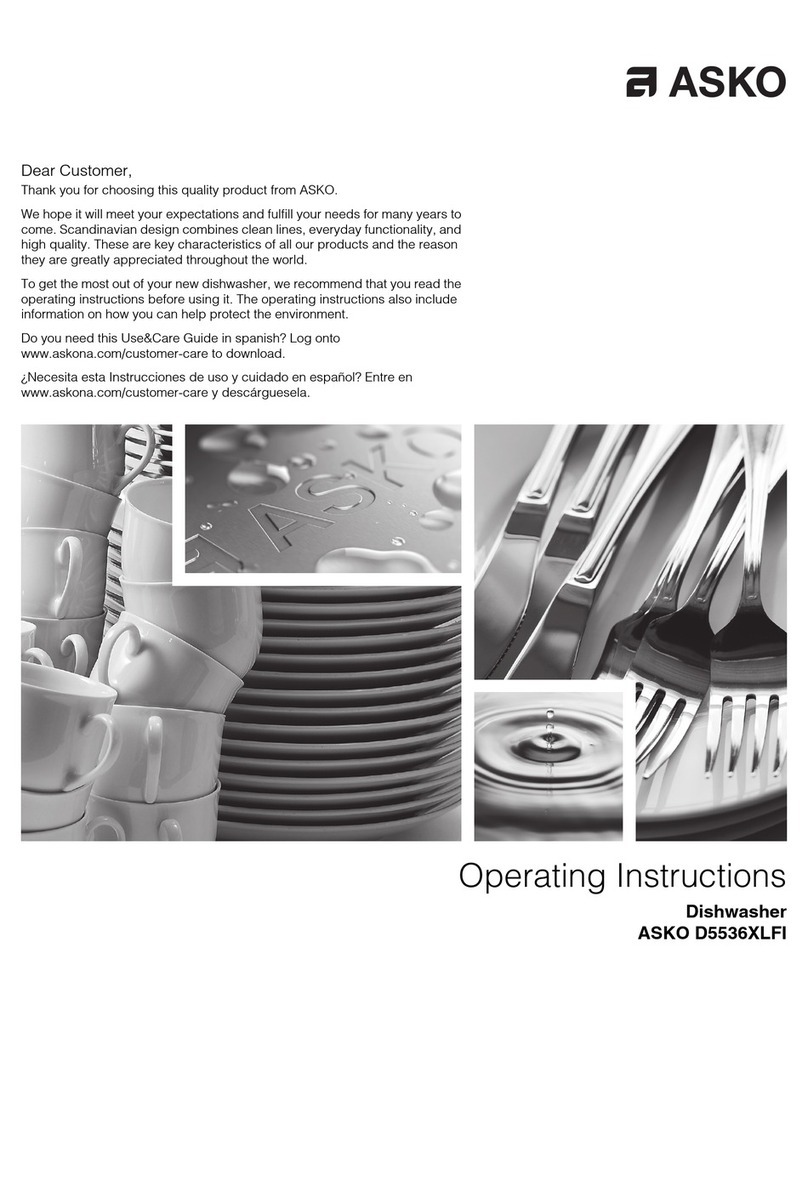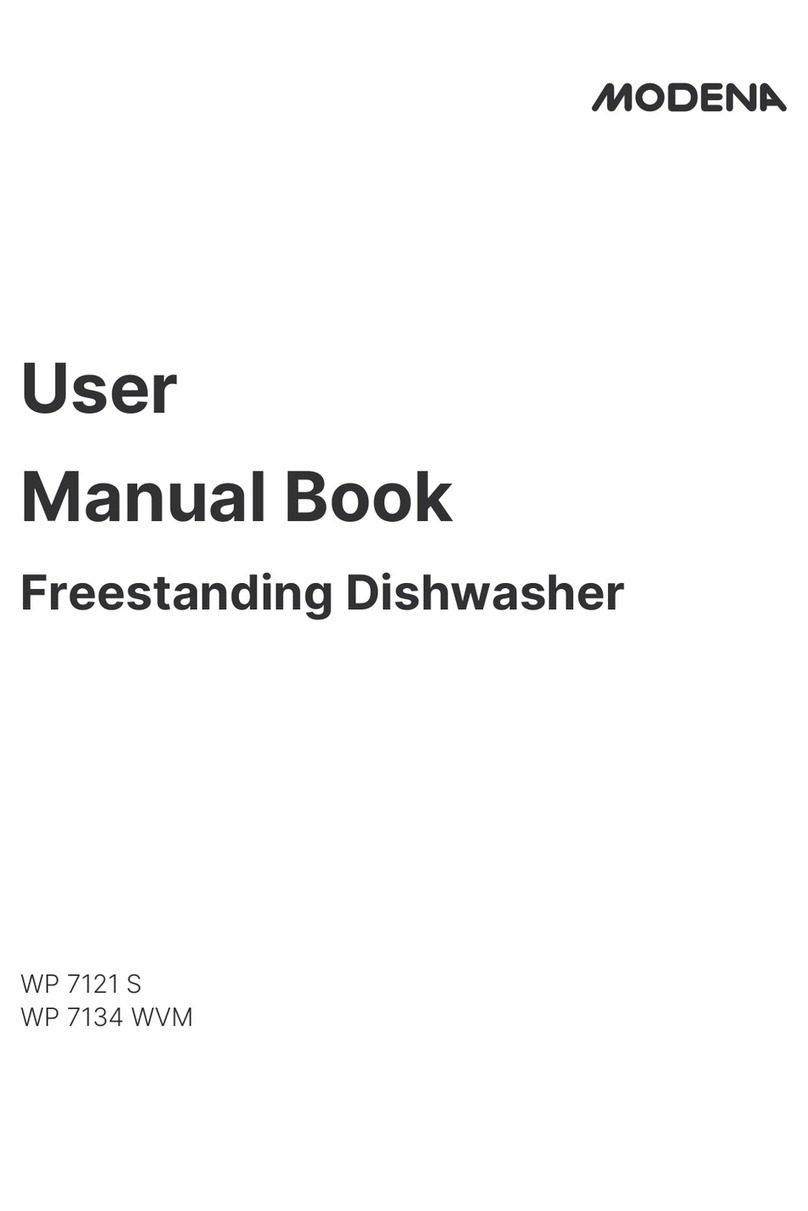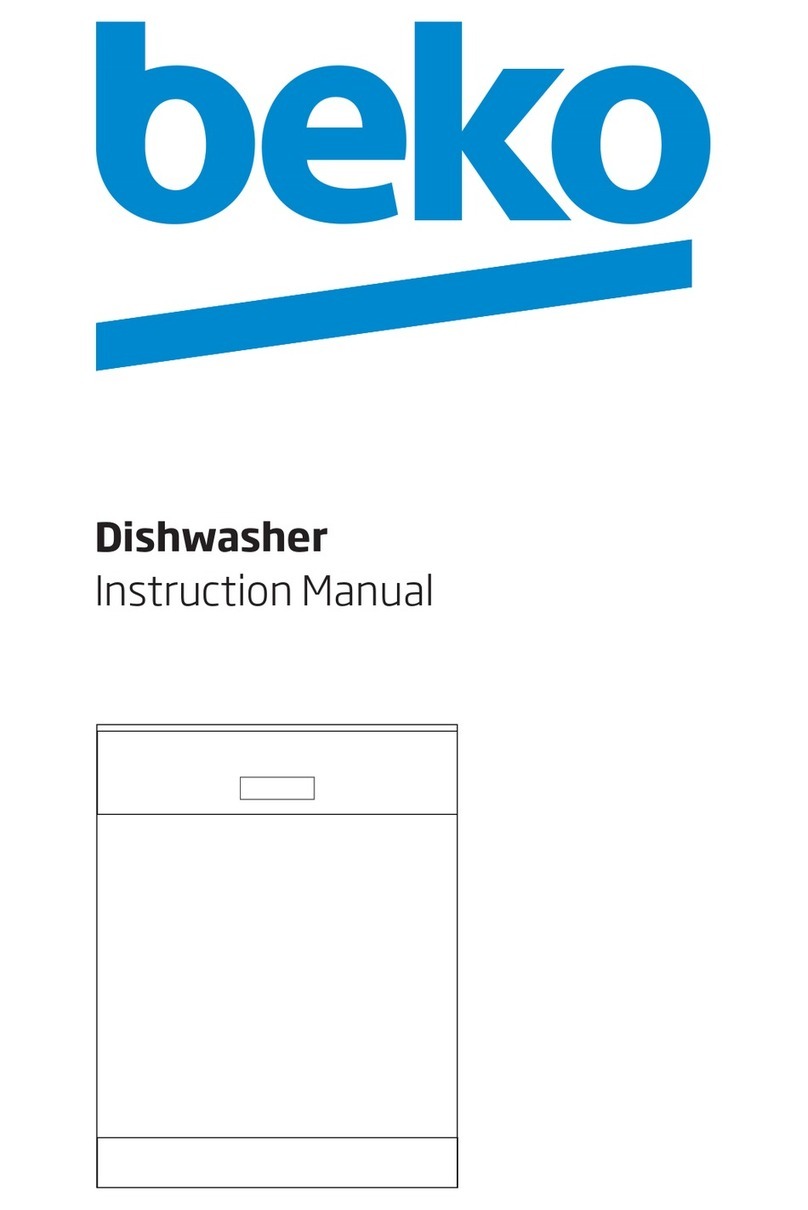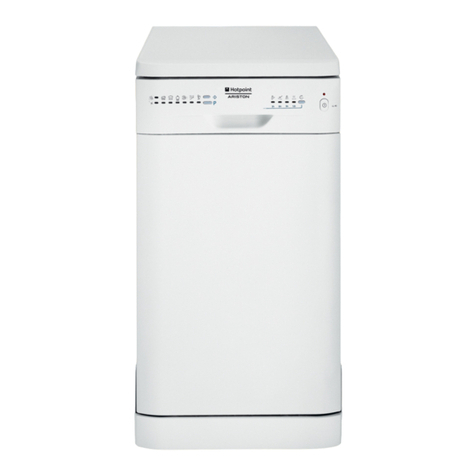4
ARISTONDISHWASHER-Instructionsforinstallationanduse
DISHWASHER
Have you changed your
mind?
If you change your mind, you can
set a shorter time delay: press but-
ton "D" to select it. You need not
reset the wash cycle.
If on the other hand you want to
cancel the delay set and you want
the cycle to start immediately,
press button "D" repeatedly until
the cycle starts and indicator light
"G" corresponding to the cycle
start phase comes on.
Dual function of
indicator lights G
1) flashing to indicate a de-
layed start: to remind you that
you have set a delayed start;
2) on and not flashing be-
neath the cycle phase sym-
bol:
meaning the cycle has started
and is in the phase indicated by
the symbol.
You have loaded your dishes and you now have
to set the wash cycle. You only need a few
minutes to learn how
Starting the dishwasher
Ready, steady, go!
Make sure the
wash cycle has
ended before
removing the
dishes!
First of all.
Turn on the water tap completely
and press ON-OFF button A:you
willhearashortbeepandindicator
light B lights up. Now the appli-
anceis onand awaitinginstructions.
Selecting the wash
cycle.
To select the wash cycle, turn knob
E clockwise until the reference
notchontheknobcorresponds with
the number or symbol for the cycle
you wish to set (have a look at the
wash cycle table on page 6).
After a few seconds, you will hear
a short beep: the wash cycle has
begun and we do not recommend
you change it.
The dishwasher keeps
you informed.
Your dishwasher is fitted with indi-
cator lights (G) which light up to
indicatethecycle phase under way.
Here are the symbols correspond-
ing to each cycle phase:
pre-wash, wash, rinses, drying.
At all times, your dishwasher tells
you which cycle phase is under
way.
Modifying a wash cycle
in progress.
But if you have chosen the wrong
cycle,nottoworry! You can modify
the wash cycle in progress, if it has
only just started. Turn the knob
anti-clockwise until it reaches the
Reset position and, after a few
seconds, you will hear 4 beeps and
indicator light G will turn off.
This is to inform you that all the
settings have been cancelled. You
are now free to re-set the correct
wash cycle.
Youve left out a dish?
Well, it happens to everyone. Inter-
ruptthewashcyclebypressingthe
ON-OFFbutton,insertthe dish you
had forgotten and press the ON-
OFF button again. The cycle will
startup fromwhereyou interrupted
it.
Finished?
The end of the wash cycle is indi-
cated by two short beeps and the
flashing of the drying phase indica-
tor light.
Turn the knob to Reset in order to
reset all the settings.
-Turn off the water tap.
-Waitafewminutesbeforeunload-
ing the dishes: they are very hot! If
you wait a little while, they dry
better thanks to the steam.
- Empty the lower rack first.
Theres been a power
failure? Have you
opened the dishwasher
door?
The wash cycle stops and then re-
starts when the electricity comes
backonor when you shut the door.
Everything is under control!
When you open
the dishwasher
door after the
wash cycle has
just ended or is
under way, take
care not to scald
yourself with the
hot steam!
You can cancel
the wash cycle
in progress, if it
has only just
started.
You decide when it
starts.
When you have loaded the dishes,
you can choose when to start your
dishwasherbefore setting the wash
cycle desired.
Press button D to delay the start
of the wash cycle by 12, 9, 6 or 3
hours. Each time you press it, you
will hear a short beep and the indi-
catorlightG correspondingtothe
selected delay will light up.
Now you can select the desired
wash cycle and, after you hear the
beep, the countdown to the de-
layed start will begin.
If you have set a 12 hour delay, for
example, once you have selected
the wash cycle, the 12 hour indica-
tor light will flash followed by the
othersin sequence until the settime
delay is up. A quick look at the indi-
cator lights will keep you informed
of the countdown progress at all
times.
Warning:
Turn the appliance off by
pressing button A,
unplug the appliance from
the electricity socket to
cut off the power supply;
the power supply cable
should consequently be
easily accessible.



